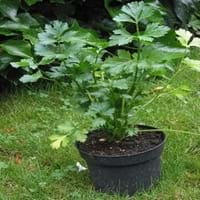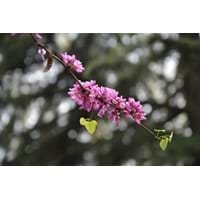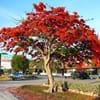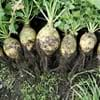Life Span
Annual or Biennial
Perennial
Origin
Europe, Northern Africa, Asia
Southern Europe
Types
Not Available
Not Available
Habitat
Coastal Regions, Marshy ground, Wet ground
Lower slopes, Semi arid regions
USDA Hardiness Zone
Not Available
6-9
AHS Heat Zone
9-3
Not Available
Sunset Zone
Not Available
Not Available
Habit
Upright/Erect
Oval or Rounded
Flower Color
White
Light Purple, Pink, White
Flower Color Modifier
Bicolor
Bicolor
Fruit Color
Tan, Brown
Brown
Leaf Color in Spring
Light Green
Green, Dark Green
Leaf Color in Summer
Green, Light Green
Green, Dark Green
Leaf Color in Fall
Green, Light Green
Green, Dark Green
Leaf Color in Winter
Not Available
Light Green
Leaf Shape
Irregular
Heart-shaped
Plant Season
Spring, Summer
Spring, Summer, Fall, Winter
Sunlight
Full Sun
Full Sun, Partial Sun
Type of Soil
Loam
Clay, Loam, Sand
The pH of Soil
Neutral, Alkaline
Acidic, Neutral
Soil Drainage
Well drained
Well drained
Bloom Time
Late Spring
Spring, Late Spring
Tolerances
Drought
Drought
Where to Plant?
Container, Ground
Ground
How to Plant?
Seedlings, Transplanting
Seedlings, Stem Cutting
Plant Maintenance
Low
Medium
Watering Requirements
Keep ground moist, Requires regular watering
Average Water Needs
In Summer
Lots of watering
Lots of watering
In Spring
Moderate
Moderate
In Winter
Average Water
Average Water
Soil pH
Neutral, Alkaline
Acidic, Neutral
Soil Type
Loam
Loam, Sand
Soil Drainage Capacity
Well drained
Well drained
Sun Exposure
Full Sun
Full Sun, Partial Sun
Pruning
Remove damaged leaves, Remove shoots
Remove damaged leaves, Remove dead branches, Remove dead leaves
Fertilizers
Less fertilizing
All-Purpose Liquid Fertilizer
Pests and Diseases
Bacteria, Downy mildew, Fungal Diseases, fungus, Mosaic viruses, Pink Root, Red blotch
Coral Spot, Red blotch, Verticillium Wilt
Plant Tolerance
Frost
Drought
Flower Petal Number
Single
Single
Fragrant Bark/Stem
Yes
Yes
Foliage Texture
Coarse
Medium
Foliage Sheen
Glossy
Glossy
Attracts
Insects, Mice, Rodents, Spider Mites
Birds, Butterflies
Allergy
Irritation to stomach
Not Available
Aesthetic Uses
Not Available
Beautification, Ornamental use, Showy Purposes
Beauty Benefits
Good for skin, Improve skin condition, Moisturizing, Skin Problems
Not Available
Environmental Uses
Air purification, Food for animals, Food for birds, Food for insects
Air purification
Medicinal Uses
Cancer, Combats Stress, Eye Problems, High blood pressure, High cholestrol, Indigestion, Inflammation, Weight loss
Not Available
Part of Plant Used
Leaves, Seeds
Flowers, Wood
Other Uses
Employed in herbal medicine, Oil is used in perfume, soaps, creams, etc., Used As Food, Used for its medicinal properties, Used as a spice
Condiment, Used as Ornamental plant, Used for woodware
Used As Indoor Plant
Yes
Yes
Used As Outdoor Plant
Yes
Yes
Garden Design
Container, Edible, Herb / Vegetable
Container, Edible, Feature Plant
Botanical Name
APIUM graveolens
Cercis siliquastrum
Common Name
Celery
Judas Tree
In German
Sellerie
Judasbaum
In French
Céleri
Judas arbre
In Spanish
Apio
Árbol de Judas
In Greek
Σέλινο
Ο Ιούδας δέντρο
In Portuguese
Aipo
Árvore de Judas
In Polish
Seler
Judasz Drzewo
In Latin
apium
Iudas ligno
Phylum
Tracheophyta
Magnoliophyta
Class
Magnoliopsida
Magnoliopsida
Clade
Angiosperms, Asterids, Eudicots
Angiosperms, Eudicots, Rosids
Subfamily
Apioideae
Caesalpinioideae
Number of Species
Not Available
Properties of Celery and Judas Tree
Wondering what are the properties of Celery and Judas Tree? We provide you with everything About Celery and Judas Tree. Celery doesn't have thorns and Judas Tree doesn't have thorns. Also Celery does not have fragrant flowers. Celery has allergic reactions like Irritation to stomach and Judas Tree has allergic reactions like Irritation to stomach. Compare all the properties and characteristics of these two plants. Find out which of these plant can be used as indoor plant. If you are interested to decorate your house and garden, find out aesthetic uses, compare them and select the plant which will beautify your surrounding. Along with beautification, try comparing medicinal and edible uses of Celery and Judas Tree and you can choose the plant having best and most benefits.
Season and Care of Celery and Judas Tree
Season and care of Celery and Judas Tree is important to know. While considering everything about Celery and Judas Tree Care, growing season is an essential factor. Celery season is Spring and Summer and Judas Tree season is Spring and Summer. The type of soil for Celery is Loam and for Judas Tree is Clay, Loam, Sand while the PH of soil for Celery is Neutral, Alkaline and for Judas Tree is Acidic, Neutral.
Celery and Judas Tree Physical Information
Celery and Judas Tree physical information is very important for comparison. Celery height is 45.70 cm and width 30.50 cm whereas Judas Tree height is 450.00 cm and width 454.00 cm. The color specification of Celery and Judas Tree are as follows:
Celery flower color: White
Celery leaf color: Light Green
Judas Tree flower color: Light Purple, Pink and White
- Judas Tree leaf color: Green and Dark Green
Care of Celery and Judas Tree
Care of Celery and Judas Tree include pruning, fertilizers, watering etc. Celery pruning is done Remove damaged leaves and Remove shoots and Judas Tree pruning is done Remove damaged leaves, Remove dead branches and Remove dead leaves. In summer Celery needs Lots of watering and in winter, it needs Average Water. Whereas, in summer Judas Tree needs Lots of watering and in winter, it needs Average Water.





